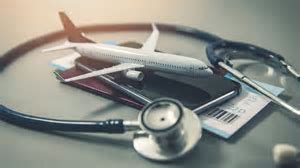
Breast Cancer Awareness Month
October is a busy month. Schools and universities are back in their routines, often complete with football games, soccer matches, and cross country meets. The fall harvest is in full swing and the trees are changing from green to a blaze of orange, yellow and red. And, we are about to be ‘spooked’ by the first holiday of the season.
October is also breast cancer awareness month and regardless of how busy October’s routines can be, it is important for women to become more aware about the importance of early detection and think about their breast care and screening plan. Women who are approaching the age of 40 need to discuss breast screening with their health care provider and determine their schedule.
Breast cancer tumors can often develop quickly and progress well-before a woman experiences any symptoms.
This October, let us stop to recognize the importance of breast cancer awareness. Let us realize that awareness of breast cancer and the importance of screening can lead to earlier diagnosis and better outcomes.
The number one cancer affecting women is breast cancer and it is the second most common cause of cancer death in women, regardless of ethnicity. The lifetime risk for developing breast cancer (for a woman) is one in six. Clearly, this makes screening an important and powerful part of any woman’s health care plan.
While screening does not lower a woman’s risk of developing breast cancer, it can lower the risk of death from breast cancer. Any discussion on breast cancer screening will include mammography which is breast cancer’s primary screening tool. A mammogram is a breast image created with low dose x-rays for screening or diagnostic purposes. Mammography comes with few risks and is the best current technology for detecting breast cancer early.
The recommended screening routine depends on the woman’s age and risk level. The American Cancer Society (ACS) defines average risk as those women who:
- Do not have a personal breast cancer history.
- Without strong family history of breast cancer.
- Have not had chest radiation before the age of 30.
- Have no known genetic mutation that puts her at higher risk.
According to the ACS, women who meet the definition of average risk should have yearly mammograms between the ages of 45 and 54. After age 54 ACS recommends that women have a mammogram every other year, unless the woman chooses to maintain her annual mammogram screening schedule.
ACS recommendations differ for women in a high-risk category. These women have:
- A strong family history of breast cancer.
- A known gene mutation in themselves or first-degree relatives.
- Had radiation therapy to the chest between the ages of 10 and 30.
- One of the rare genetic syndromes which are known to elevate the risk of cancer.
For women in this category, ACS recommends annual mammogram and magnetic resonance images (MRIs) of the breasts.
In addition to mammography, a clinical breast exam (CBE) may also be performed to screen for breast cancer. A CBE is a check for lumps or other physical changes by a trained healthcare provider and typically done during a woman’s annual physical. Clinical organizations are not unanimous in their stance on CBE. The ACS does not recommend a CBE for women getting regular mammograms, while the American College of Obstetricians and Gynecologists recommends that women aged 29 through 39 have a CBE at least every three years. Women may also perform self-exams, but this is also met with differing recommendations. Organizations that recommend self-exams suggest they be done monthly and at the same time of the month. Women who want to make self-exam a part of their screening should discuss a systematic method with their physician.
While there is differing recommendations around breast cancer screening, the most important message for women, not only in October, but in all the months of the year, is to discuss breast cancer screening guidelines with their providers and do what they feel is right for them.
Don’t allow this October’s breast cancer awareness campaign slip by. Make this your reminder, for yourself or the women in your life, of the importance of regular screening based on age and risk profile. If you don’t have an ongoing screening plan take this opportunity to contact your physician and start one.
SOURCES
https://www.cancer.org/cancer/breast-cancer/screening-tests-and-early-detection/american-cancer-society-recommendations-for-the-early-detection-of-breast-cancer.html
https://www.radiologyinfo.org/en/info.cfm?pg=mammo
http://www.froedtert.com/healthlibrary/default.aspx?sid=1&id=401&pTitle=CondDisease&ContentTypeID=85&ContentID=P00169



